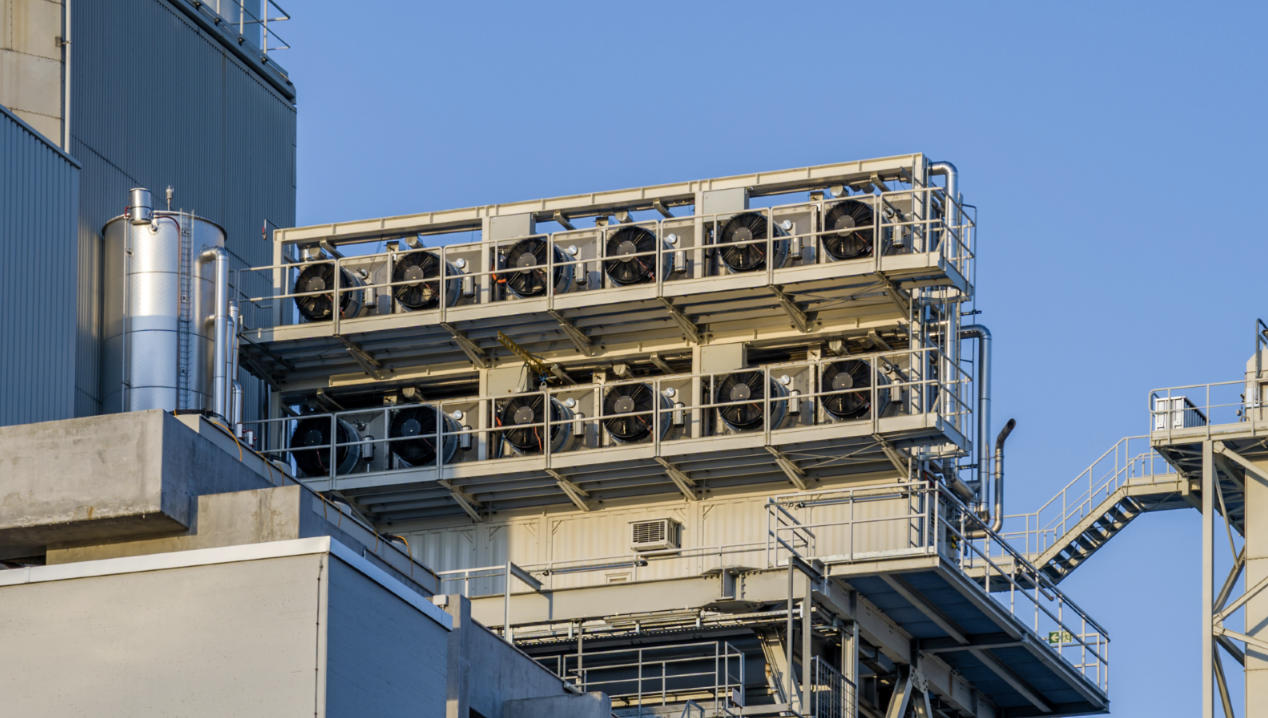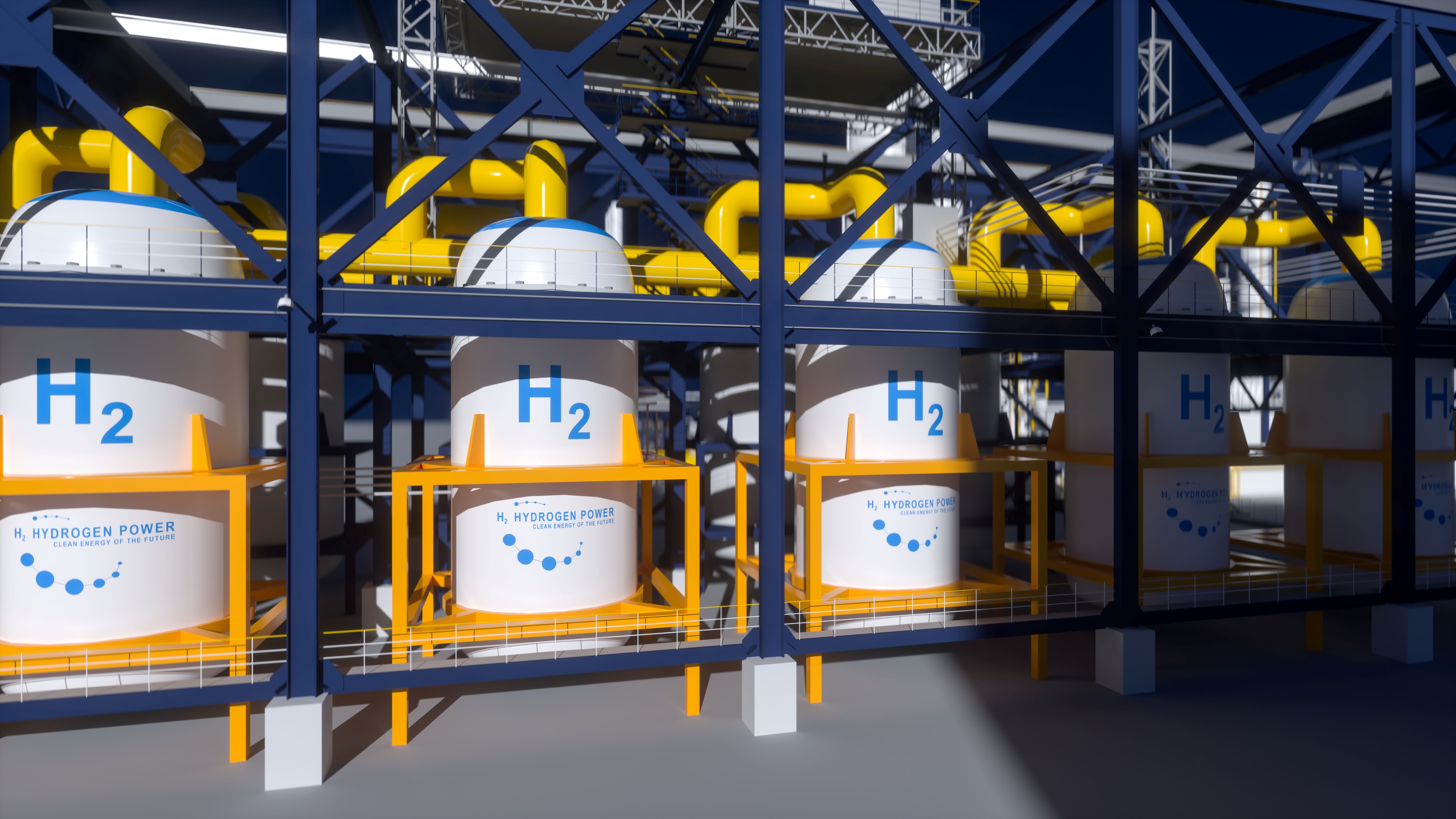
CCS and Hydrogen: Pushing Forward, Not Just Hoping
Carbon capture and clean hydrogen are more than climate buzzwords. They’re evolving into serious tools for decarbonization. But progress is still bumpy. Costs remain high, permitting is messy, and timelines are painfully slow. The upside? Policy changes and stronger funding signals are finally helping these sectors inch closer to real viability.
According to S&P Global Commodity Insights, CCS is now seen as scalable and necessary for heavy-emission industries like cement, steel, and power. But real scale is still out of reach. Only 34 large-scale CCS projects are running today, and most are still tied to enhanced oil recovery. Growing this 50-fold isn’t incremental growth. It’s a leap.
Sally Benson, energy expert and Stanford Professor, puts it plainly: “CCS is not a silver bullet, but for decarbonizing heavy industry, it’s essential.”
>> RELATED: BP's Indiana Exit Is Not the Endgame for Clean Hydrogen

45Q Tax Credit: Real Money on the Table
The updated 45Q tax credit—$85 per ton for geologic storage and $180 per ton for DAC — is starting to change the game. What used to be theory is now entering the boardroom. Still, the floodgates haven’t opened yet.
Permitting delays, especially with Class VI wells, and the slow disbursement of DOE grants are creating bottlenecks. But with the right location, a buyer ready, and enough capital runway, the numbers are beginning to pencil out.
Clean Hydrogen’s Ammonia Surge
Clean hydrogen is making moves, especially through ammonia. Over 70 percent of announced green hydrogen in heavy industry is headed for ammonia production. It’s used in fertilizer and is now gaining traction as a shipping fuel.
Pairing ammonia with CCS creates export potential and big carbon savings. Companies like Air Products and CF Industries are doubling down on U.S.-based projects, and global interest is strong.
Fatih Birol, IEA chief, said it clearly: “Hydrogen can be the missing link in the clean energy transition.”

>> In Other News: Entropy Enters Definitive Agreement to Purchase Strategic Carbon Storage Assets
The Real Price Tag of Capture
Capture can eat up 70 percent of total CCS project costs. Rising inflation and tight supply chains are pushing those numbers even higher—by an estimated 8 to 20 percent.
What makes a difference? Advanced solvents, smart site selection, and heat integration. These aren’t bonus features. They’re essential for making projects financially viable. For now, most successful projects are sticking close to easier sources like ethanol or ammonia facilities.
Carbon Markets: A Sliver of Hope
Voluntary carbon markets are opening up real opportunities, especially for BECCS. Carbon removal credits are drawing big corporate buyers. Microsoft alone has committed to over 6.7 million metric tons of CDR from a single project in Louisiana.
The demand is solid. The supply still isn’t there.
Direct Air Capture: From Fringe to Focus
DAC was once a wild idea. Now it’s inching toward reality. Thanks to IRA incentives and private capital, U.S. companies like Heirloom and CarbonCapture Inc. are moving from theory to field deployment.
The costs are still steep—$400 to $600 per ton—but DAC is modular, permanent, and not tied to geography. Most importantly, it handles legacy emissions. No other solution offers that.
CCS Hubs, Risk Models, and What’s Working
Shared infrastructure is becoming a smarter play. CCS hubs reduce risk and lower costs by pooling compression, transport, and storage systems.
The Harvestone Blue Flint project in North Dakota is a prime example. It raised $205 million in tax equity, used centralized infrastructure, had a tight CO₂ source, and followed IRA-aligned design principles. It’s a solid model worth replicating.
Global CCS Projects Snapshot (2025)
| Region | Projects Announced | Advanced Stage | Capture Capacity (MMtCO₂) |
|---|---|---|---|
| North America | 126 | 32 | 21.5 |
| Europe | 98 | 24 | 17.8 |
| Asia Pacific | 76 | 15 | 13.2 |
| Middle East | 34 | 5 | 5.9 |
What Needs to Change
The pace is still too slow. Permitting is stuck in a maze of federal and state red tape, public resistance, and overwhelmed agencies. Meanwhile, investment timelines are long and tech costs aren’t dropping fast enough.
Still, momentum is shifting. Over 42 active or pending CCS-supportive policies are on the table worldwide. Billions are being funneled into clean hydrogen infrastructure. The U.S. has a lead position—but only if it keeps pushing.
Jennifer Wilcox, Principal Deputy Assistant Secretary for Fossil Energy and Carbon Management at the U.S. Department of Energy: “To hit net-zero, we need to pull carbon from the air and the stack. CCS is a key part of that toolkit.”
Selected Policy Mechanisms Supporting CCS Deployment
| Jurisdiction | Policy Tool | Description |
|---|---|---|
| United States | 45Q Tax Credit | Provides up to $85/ton for CO₂ storage and $180/ton for direct air capture. Includes direct pay and credit transferability options. |
| Canada | Investment Tax Credit | Supports capital investment in CCS with up to 50% tax credit for eligible expenses. |
| European Union | Carbon Contracts for Difference | Guarantees a fixed carbon price to reduce revenue uncertainty for CCS developers. |
| United Kingdom | Cluster Sequencing Support | Government-backed funding to advance CCS infrastructure in industrial clusters. |
| Japan | Green Innovation Fund | Financial support for large-scale CCS demonstration projects and R&D. |
Final Take
Carbon capture and clean hydrogen aren’t simple, and they aren’t cheap. But they’re real. And they’re necessary.
They’re not perfect, but they’re what’s available. The way forward is clear—build smarter, scale faster, and stop dragging our feet. This isn’t a fad. This is infrastructure for climate action. And it needs to accelerate now.
Subscribe to the newsletter
Daily decarbonization data and news delivered to your inbox
Follow the money flow of climate, technology, and energy investments to uncover new opportunities and jobs.
Latest issues
-
How 45Q Credits Revived This Troubled $9B Megaproject
Inside This Issue 💰 How 45Q Credits Revived This Troubled $9B Megaproject 🍁 Commencement of First Phase Operations for a Carbon Capture and Storage (CCS) Project in Canada 🤝 Haffner Energy Secures...
-
The Deal Structure Everyone's About to Copy
Inside This Issue 💼 The Deal Structure Everyone's About to Copy 📈 Exxonmobil Raises Its 2030 Plan – Transformation Delivering Higher Earnings, Stronger Cash Flow, and Greater Returns ⚡ Nextera Wor...
-
Inside XCF Global's $300M Bet to Double U.S. SAF Output
Inside This Issue ✈️ Inside XCF Global's $300M Bet to Double U.S. SAF Output ⚙️ Capsol Technologies Signs MoU with US Utility to Deploy CapsolGT® for Low-carbon Gas Power Generation 🏭 Babcock &...
Company Announcements
-
Clean Planet Technologies (CPTech), part of the Clean Planet Group, has announced that its core pyrolysis-oil upgrading process has now been formally patented in both the United States and Saudi Ar...
-
(December 12, 2025 - Oslo, Norway) Nel ASA (Nel, OSE: NEL) is pleased to announce that following a seven-year development program, and now a successful start-up and production of clean hydrogen on ...
-
Hydrogen Technology Venture Launches in Bowling Green
BOWLING GREEN, Ky. — A new tech company is coming to Bowling Green, bringing dozens of jobs to Warren County. What You Need To Know UFS ARK will be a joint venture of United Fiber Sensing and OgM...
-
HyOrc Positions Green Methanol as the Economic Solution to Shipping’s Decarbonization Challenge
HOUSTON, Dec. 12, 2025 (GLOBE NEWSWIRE) -- HyOrc Corporation (OTCID: HYOR), a fully SEC-reporting clean-energy company focused on decarbonizing heavy industry, today commented on the growing global...